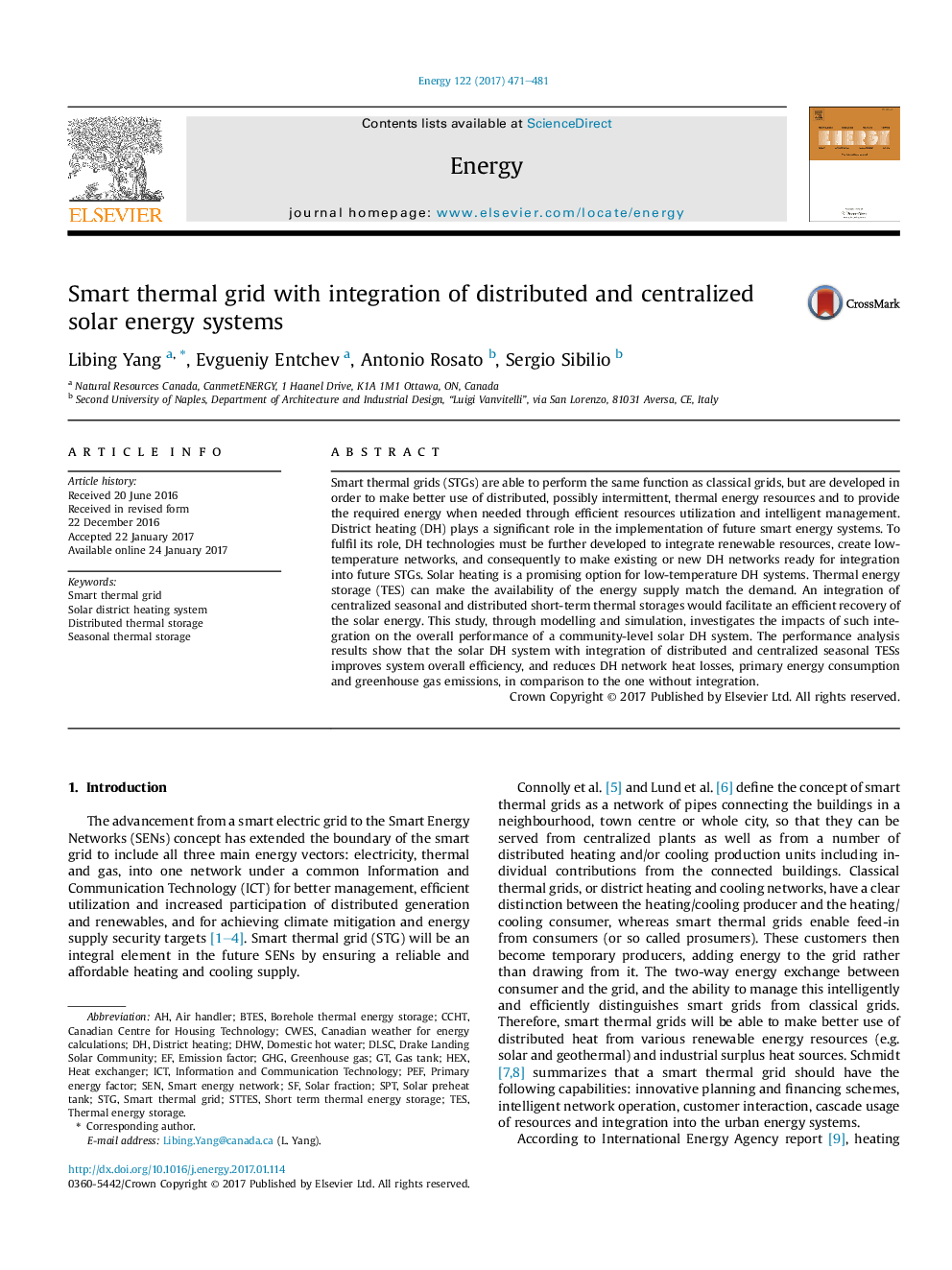| Article ID | Journal | Published Year | Pages | File Type |
|---|---|---|---|---|
| 5476270 | Energy | 2017 | 11 Pages |
â¢STG should be designed to store energy in the most efficient way at the most effective location.â¢Integration of centralized seasonal and distributed TESs in a solar DH system is proposed.â¢Performance of such integrated solar DH system is evaluated and compared to the one without.â¢The integration results in reduction of primary energy consumption and GHG emission.â¢The integration improves the overall efficiency of the total solar energy system.
Smart thermal grids (STGs) are able to perform the same function as classical grids, but are developed in order to make better use of distributed, possibly intermittent, thermal energy resources and to provide the required energy when needed through efficient resources utilization and intelligent management. District heating (DH) plays a significant role in the implementation of future smart energy systems. To fulfil its role, DH technologies must be further developed to integrate renewable resources, create low-temperature networks, and consequently to make existing or new DH networks ready for integration into future STGs. Solar heating is a promising option for low-temperature DH systems. Thermal energy storage (TES) can make the availability of the energy supply match the demand. An integration of centralized seasonal and distributed short-term thermal storages would facilitate an efficient recovery of the solar energy. This study, through modelling and simulation, investigates the impacts of such integration on the overall performance of a community-level solar DH system. The performance analysis results show that the solar DH system with integration of distributed and centralized seasonal TESs improves system overall efficiency, and reduces DH network heat losses, primary energy consumption and greenhouse gas emissions, in comparison to the one without integration.
